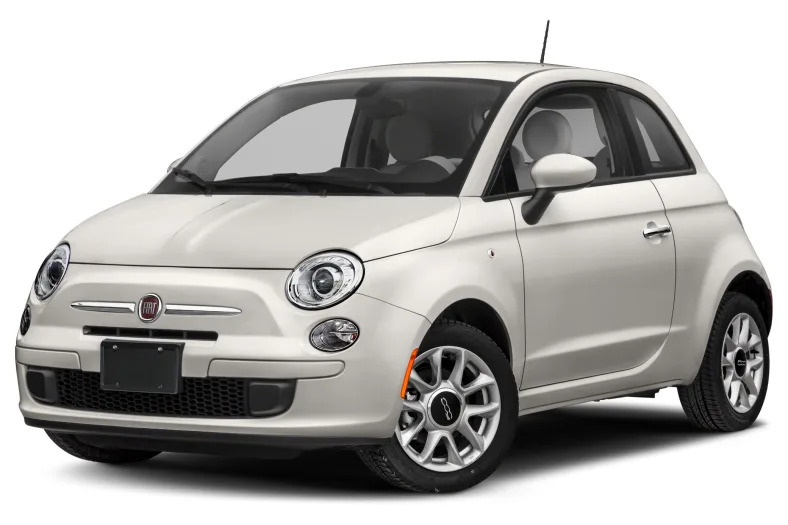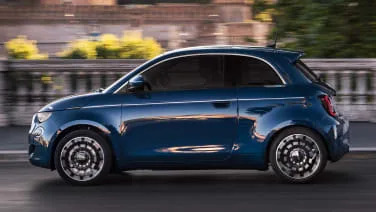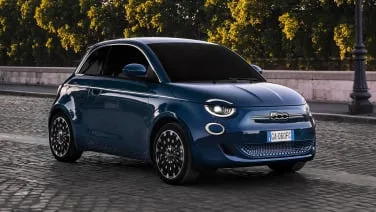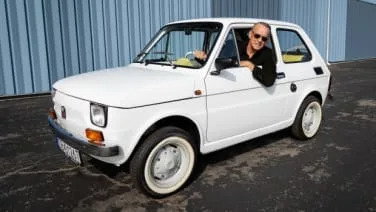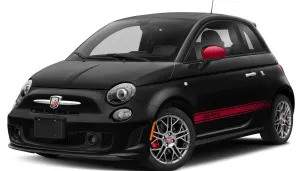2019 FIAT 500
The market for tiny hot hatchbacks hatchbacks was always small in the United States, but it's getting even smaller. The Ford Fiesta ST has joined the dearly departed and soon to join it is the Fiat 500 Abarth, which Fiat has announced will go away along with its less caffeinated 500 siblings. Before it does, though, we got one more romp in the little monster and learned that, even with its age and rough edges, it’s still one of the most fun and charismatic machines you can get for the money. You're reminded of it the second you twist the switchblade key. The little turbo 1.4-liter four-cylinder has a gnarly burble at idle that wouldn’t seem out of place in a muscle car. It only gets better when you start cruising around. The burble becomes a raging howl, and shifting right at redline results in a whiplike crack. It’s intoxicating. The 500 Abarth is boisterous, but it’s not exactly fast. At 160 horsepower and 183 pound-feet of torque, most of its competition, such as the Veloster Turbo and Civic Si, feature at least 200 horsepower. The turbo isn’t especially fast to spool up, and the engine isn’t quick to rev either. But it’s peppy enough, and the slowly building boost comes on very smoothly. As such, it’s easy to manipulate what power the Abarth has. And the exhaust’s placebo effect is omnipresent. But make sure the car is in Sport mode. If it isn’t, the amount of boost is restricted, making the Abarth feel more like the normal 135-horsepower 500, and no amount of noise will distract you from that. The tiny turbo engine can be paired with either a five-speed manual or six-speed automatic transmission. The manual is a pretty average unit. The shifter is well-placed, but the throws are long and ropey. The pedal position is excellent, making rev-matched downshifts easy. Only having five gears to choose from seems strange in this day and age, but the long-ish ratios work nicely with the slow, low-revving engine. And you don’t have to mess with the wriggly shifter too much. The automatic’s six ratios feel like a good number, and each ratio is closely spaced, which helps keep the car in the power band. It shifts quite smoothly and fairly quickly, too, whether you’re in automatic or manual mode. The automatic even makes smart downshifts when slowing for corners. It’s a good unit that doesn’t detract from the experience. Curiously, the automatic model makes more torque at 183 pound-feet to the manual’s 170. The manual has a bit more power with 160 horses versus the automatic’s 157. When hitting up corners, the Abarth is still good. Steering has lots of feel and is quick, but it requires little corrections frequently. It turns in eagerly and has plenty of grip. There isn’t much body roll, either. Its tiny size and light, tossable demeanor help give you a lot of confidence for hustling it around backroads. Going over bumps, the suspension is …
Full Review
The market for tiny hot hatchbacks hatchbacks was always small in the United States, but it's getting even smaller. The Ford Fiesta ST has joined the dearly departed and soon to join it is the Fiat 500 Abarth, which Fiat has announced will go away along with its less caffeinated 500 siblings. Before it does, though, we got one more romp in the little monster and learned that, even with its age and rough edges, it’s still one of the most fun and charismatic machines you can get for the money. You're reminded of it the second you twist the switchblade key. The little turbo 1.4-liter four-cylinder has a gnarly burble at idle that wouldn’t seem out of place in a muscle car. It only gets better when you start cruising around. The burble becomes a raging howl, and shifting right at redline results in a whiplike crack. It’s intoxicating. The 500 Abarth is boisterous, but it’s not exactly fast. At 160 horsepower and 183 pound-feet of torque, most of its competition, such as the Veloster Turbo and Civic Si, feature at least 200 horsepower. The turbo isn’t especially fast to spool up, and the engine isn’t quick to rev either. But it’s peppy enough, and the slowly building boost comes on very smoothly. As such, it’s easy to manipulate what power the Abarth has. And the exhaust’s placebo effect is omnipresent. But make sure the car is in Sport mode. If it isn’t, the amount of boost is restricted, making the Abarth feel more like the normal 135-horsepower 500, and no amount of noise will distract you from that. The tiny turbo engine can be paired with either a five-speed manual or six-speed automatic transmission. The manual is a pretty average unit. The shifter is well-placed, but the throws are long and ropey. The pedal position is excellent, making rev-matched downshifts easy. Only having five gears to choose from seems strange in this day and age, but the long-ish ratios work nicely with the slow, low-revving engine. And you don’t have to mess with the wriggly shifter too much. The automatic’s six ratios feel like a good number, and each ratio is closely spaced, which helps keep the car in the power band. It shifts quite smoothly and fairly quickly, too, whether you’re in automatic or manual mode. The automatic even makes smart downshifts when slowing for corners. It’s a good unit that doesn’t detract from the experience. Curiously, the automatic model makes more torque at 183 pound-feet to the manual’s 170. The manual has a bit more power with 160 horses versus the automatic’s 157. When hitting up corners, the Abarth is still good. Steering has lots of feel and is quick, but it requires little corrections frequently. It turns in eagerly and has plenty of grip. There isn’t much body roll, either. Its tiny size and light, tossable demeanor help give you a lot of confidence for hustling it around backroads. Going over bumps, the suspension is …
Hide Full Review
Hide Full Review
Retail Price
$16,495 - $20,745
MSRP / Window Sticker Price
| Engine | 1.4L I-4 |
| MPG | Up to 28 city / 33 highway |
| Seating | 4 Passengers |
| Transmission | 5-spd man w/OD, 6-spd auto w/OD |
| Power | 135 - 160 hp |
| Drivetrain | front-wheel |
| Curb Weight | 2,366 - 2,512 lbs |
Smart Buy Program is powered by 

